AI Chatbot for Ecommerce: Top 5 Bots to Drive Business Growth
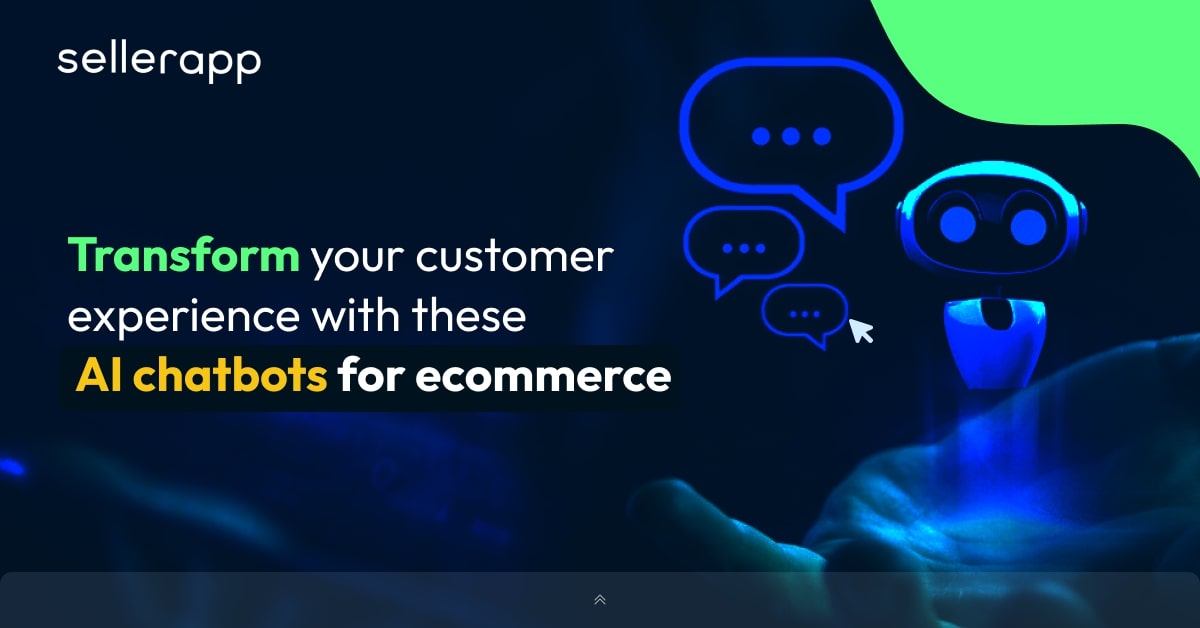
True, the AI Chatbot for ecommerce businesses is basically yesterday’s news at this point. We all know that they’re out there answering customer queries and pretending to be human. However, just because they’re common these days doesn’t make them any less effective.
When leveraged properly, these Ecommerce AI Chatbots can do way more than take care of repetitive tasks.
For example, it can provide post-purchase support, and automate sales, and depending on custom conditions or triggers, it could potentially upsell or cross-sell a product.
Of course, not all ecommerce AI chatbots come loaded with these features or capabilities, which is why we’ve compiled a list of the best of the best ecommerce AI chatbots that can help take your ecommerce business to the next level.
Keep reading to find out the best AI Chatbot for Ecommerce!
Quick Guide
- What is an AI Chatbot for Ecommerce?
- Real business impact of ecommerce chatbots — Success metrics you need to track
- 5 Best Ecommerce Chatbots
- Why does your business need an Ecommerce Chatbot?
- What to look for when selecting an AI Chatbot for Ecommerce?
- Final Thoughts
What is an AI Chatbot for Ecommerce?
Fundamentally, an ecommerce chatbot is a software tool that’s designed to assist customers. Chatbots are incredibly effective in pulling this off as they effectively simulate human conversations. Therefore, the use cases for AI chatbots tend to vary significantly:
- Troubleshooting Queries
- Assisting with orders
- Automating sales
- Recommend products (when the catalog is massive)
- Connecting customers to agents
- Upselling or cross-selling products
- Helping with post-purchase support
- Gathering feedback
- Running survey’s
- And much more
However, Ecommerce chatbots have become incredibly versatile. They have evolved from old-school Q&A chatbots to AI behemoths that can be trained to execute complex workflows.
This has resulted in Chatbots with human-level output and effectiveness. By leveraging these bits not only can you prepare for customer conversations effectively, but you can also trigger changes based on specific conditions that are met during the customer’s journey.
This level of automation can be unbelievable for ecommerce businesses looking to scale with limited resources that require exceptional results. With the right AI chatbot, you can improve the customer experience with 24/7, which can take personalization to new levels, it can also streamline order processing for employees.
In addition to having a customer service executive who is never tired and evolves in competence, you can also scale interactions, gather super accurate insights, and gain a comprehensive understanding of what customers want to form a digital storefront experience.
Of course, in the grander scheme of things, AI Chatbots are not meant to replace a customer service individual, these bots should be used to tackle frequently asked questions while escalating the major issues to your customer service team or executing similar workflows and supporting humans.
For example, you’ve purchased a blender from an ecommerce store and want to return it. The AI e-commerce assistant can initially help support the customer by taking them through the overall process by presenting several options.
However, when it comes to specific issues like a specific component of the blender needs replacement or there’s a defectivity, the AI e-commerce assistant can then connect the customer to the customer service team.
Real business impact of ecommerce chatbots — Success metrics you need to track
Like most software tools, you won’t know the proper business-level impact of the ecommerce chatbots unless you track the performance of the bots. After all, you’ll need to understand if these AI chatbots are effective for your business and you do need to double down or scrap these bots as they’re simply bleeding you dry.
Fundamentally, to measure the effectiveness of eCommerce chatbots, businesses should focus on the following key success metrics:
Goal Completion Rate (GCR)
GCR is a custom metric and you can formulate it as you please. However, it is the primary metric you should track. Now, this is a custom metric without a set formula as this is completely dependent on the custom goal. Especially, as these bots can be used to execute a ton of tasks such as helping a customer complete a purchase or even help them solve an issue. Fundamentally, a high GCR rate indicates that the AI chatbot has effectively met the user’s needs.
Customer Engagement Metrics
Now, these metrics could also be a GCR. However, we’ve separated a couple of common success metrics that are used to measure chatbot performance. The customer engagement metrics tend to measure the overall duration of interactions the customer will have with the AI chatbot. Of course, it also tracks the frequency amongst other things. For example, you can further break customer engagement metrics into the following:
Total Interactions — The number of conversations initiated by users.
Average Chat Duration — The average time users have spent interacting with the AI chatbot.
Bounce Rate — The Bounce rate is the percentage of users who leave without interacting with the AI chatbot. Usually halfway through.
Louis Vuitton, for example, used a chatbot to increase digital interactions by 30%. Of course, this happened over time and after tweaking their chatbot strategy. However, the sheer brilliance here is that this exercise managed to prove that AI-powered customer engagement can also effectively replace the in-store luxury experience to a certain extent, leading to more customer satisfaction and loyalty.
Conversion Rate
The conversion rate is specifically designed to track if users complete desired actions. For example, a direct purchase of a product or, it can be as simple as signing up for a newsletter. A higher conversion rate would indicate that not only is the engagement working but also the persuasion by the AI chatbot for ecommerce.
Cart Recovery Rate
Cart Recovery Rate is another way of looking at the cart abandonment metrics. For example, if you’re business has a cart abandonment rate that exceeds 50- 60%, adding an AI e-commerce assistant to push reminders or incentives can help you recover a major chunk of potential revenue.
For example, Procosmet’s proactive chatbot strategy led to a 15% decrease in cart abandonment rates, which effectively shows that using AI chatbots properly can result in a gain of otherwise lost revenue.
First Contact Resolution
Alright, now we’re getting a bit technical, the first contact resolution metric measures the specific proportion of queries that are resolved by the chatbot without needing any redirection or being pushed to a customer service executive. Now, tracking this effectively will help you train your AI chatbot effectively. You can also refine the workflow more effectively.
Average Resolution Time
This is the calculation of the average time taken by the AI Bot to resolve the query itself. Is it taking a ton of time or is it being handled quickly?
Retention Rate
This is similar to the cart recovery rate but it’s more specific to the chatbot itself. It tracks how often the user comes back to the chatbot to solve additional queries or any additional interactions. This can help you understand the intent/interest of the customer and even potentially push them to a salesperson after a specific number of interactions.
Of course, there are several other metrics. However, we’ve listed down the ones that are absolutely necessary. These metrics can help you measure the various aspects of the ecommerce bot and help you tweak their flow or help them execute better conversations. The metrics can also give you an idea of whether you want to completely replace these bots with a different service.
5 Best Ecommerce Chatbots
ChatBot
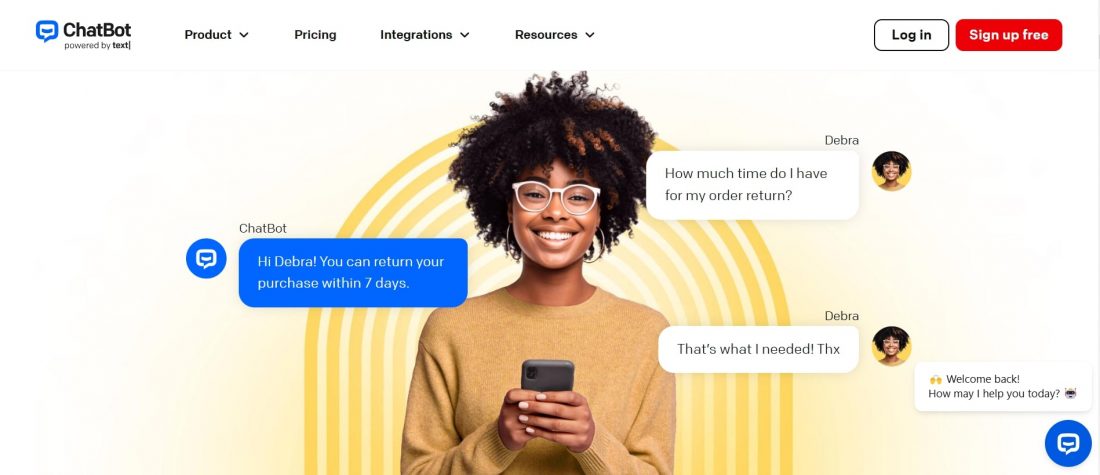
Yes, this AI Chatbot is called the ChatBot and they’re hands down one of the best in the market. This Chatbot goes above and beyond to redefine the overall customer journey. The best part is that this AI Bot elevates the customer’s experience without relying on the capabilities of Open AI, Google, or any of the popular AI companies. This essentially means that you won’t have to deal with costly API calls.
Most importantly, it’s a solid AI Chatbot for Ecommerce as it seamlessly integrates with Shopify. You can expect it to perform a series of actions that benefit the Shopify ecosystem. For example, businesses can use ChatBot to create personalized offers, Offer discounts, reduce product search time, run customer loyalty campaigns, help track order status, and much more.
Most importantly, this chatbot comes with an amazing drag-and-drop builder that requires no coding, no third-party dependencies, and quick/accurate answers.
Amazingly, ChatBot also comes with an in-platform testing tool to test your ecommerce chatbot before going live. This can help you iron out any wrinkles. We absolutely fell in love with this feature when we were testing this tool. We managed to refine a ton of workflows. Additionally, this beast of a ChatBot also comes with pre-built chatbot templates. So, you have a good foundation to start off with.
As an ecommerce intelligence platform, our eyes tend to gravitate towards the analytics feature most of the time and we can confidently say that ChatBot’s analytics section and reports can help you effectively track customer experience and pivot accordingly.
Hubspot
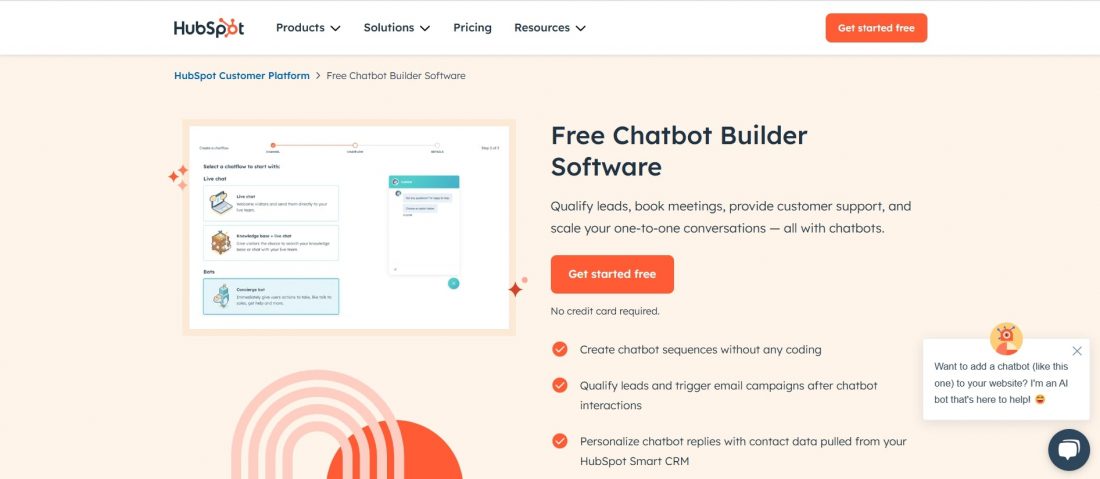
With Hubspot doing pretty much everything, it’s no wonder that they’re in the chatbot space as well. Although we went in with neutral expectations, we were blown away by the solution. We loved the fact it could integrate with the CRM and could be used to deliver personalized messages. This can become a superpower if you have repeat users as you can run personalized sequences, making the process of qualifying leads more simple.
The best part is that it can help you send these personalized emails as soon as they’re close to conversion or have already converted.
Even from the support aspect Hubspot’s chatbot can pull information from your knowledge base or publicly available URLs such as landing/feature pages to help support your customers with ease. Of course, you don’t have to code either. It comes with a rule-based chat flow system.
However, it can get expensive. So, you’ll need to really understand if you’re business requires this type of solution.
ChatFuel
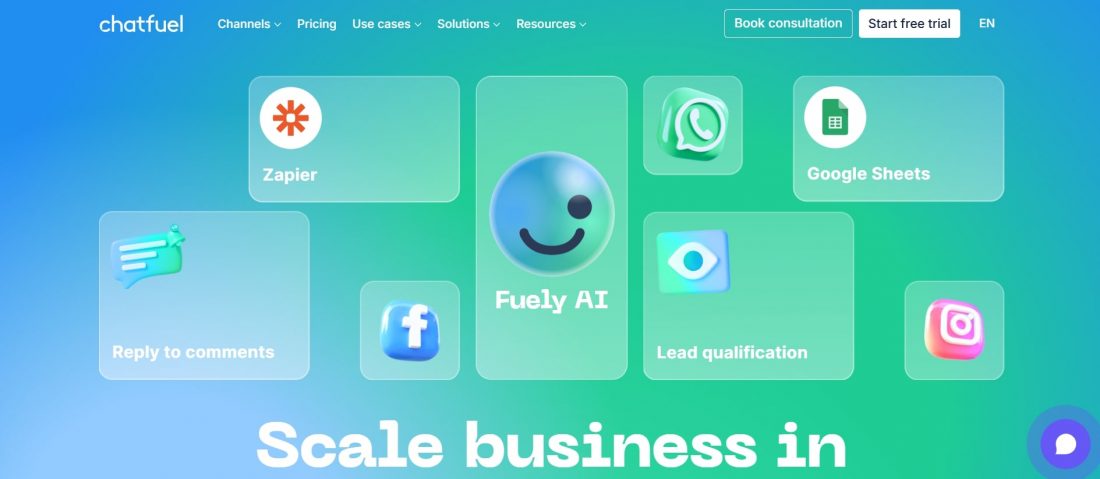
ChatFuel is another interesting e-commerce chatbot solution. It is designed to seamlessly integrate with Facebook, Instagram, WhatsApp, and other social media platforms. When used effectively, this AI chatbot can funnel customers from direct messages or ads into your communication channels. You can automate this.
In addition to answering customer queries on social media, it also comes with a built-in CRM to segment and qualify leads. We also appreciate the fact that ChaFuel seamlessly integrates with Zapier, Shopify, Google Sheets, and much more, making it incredibly versatile.
However, the best part about this AI chatbot for ecommerce is that it has a stellar support team that is available 24/7 with a brilliant response time of less than 5 minutes.
Tidio
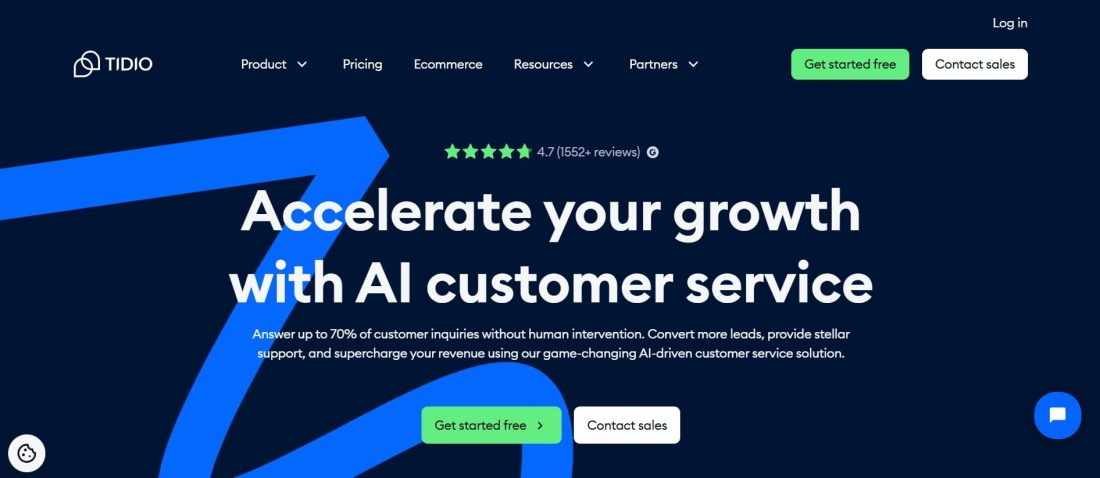
Tidio is hands down the best AI Chatbot for Ecommerce in the market right now. Not only can it automate client support and offer proactive customer service but it also comes with a super easy-to-use visual builder and chatbot templates that can help you get started with the process of creating bots.
Tidio also comes with a conversational AI Lyro that’s capable of answering client questions in an extremely human-like manner. So, much so that we could barely tell the difference. What really stuck out was the super quick and seamless installation process. All you need to do is use the plug-in or use the snippet.
Tidio can also answer customer questions and solve problems. However, it can also execute fairly complicated actions as well. For example, it can effectively track your website visitors and help you create personalized offers for their activities.
SnatchBot
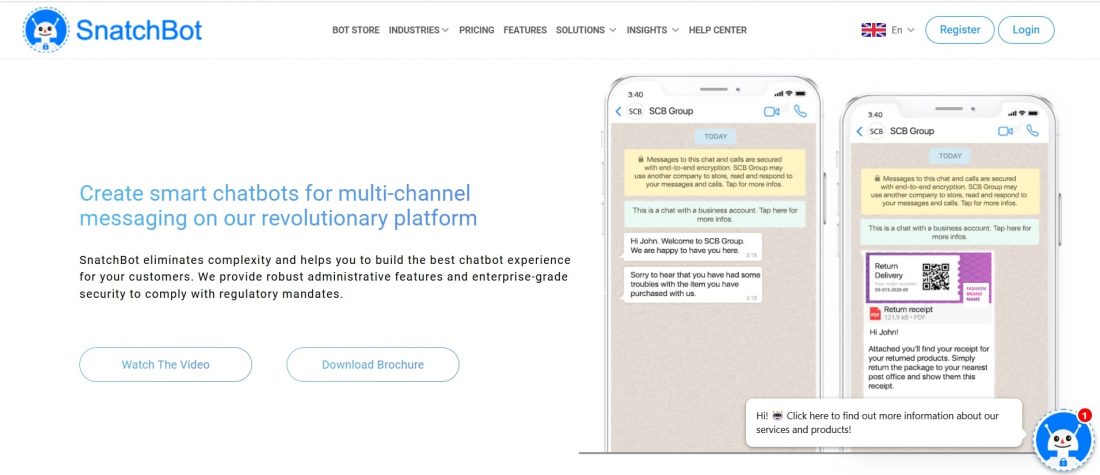
SnatchBot is one of the best ecommerce chatbots out there. Primarily as it offers a visual workflow automation system that can make your life easier. Moreover, it also comes with an omnichannel platform integration such as FB Messenger, Line, Telegram, Skype, etc.
SnatchBot made our list due to its text-to-speech capabilities. With a combination of NLP, ML, and Voice Recognition, SnatchBots can take your business to the next level. Specifically, a user can simply ask it question verbally rather than taking the time to type it out.
While this Chatbot is designed specifically for nontechnical users, it can still be quite challenging for beginners to get the hang of and effectively make use of the chatbot elements.
Why does your business need an Ecommerce Chatbot?
AI Chatbots are incredible game changers for most Ecommerce businesses. Barring the specific use cases we’ve mentioned earlier, here are some comprehensive benefits of using AI Ecommerce Chatbots:
Save Time and Resources
This is hands down the most straightforward benefit of the ecommerce chatbot to help businesses save an incredible amount of time and resources. After all, customer requirements are becoming increasingly larger and they want you to solve their issue immediately. What would earlier take close to a month would need to happen in seconds these days.
Hypothetically, if you are selling a makeup kit, you may be hit with customer queries regarding specific components of the kit or even concerns about any allergens. A Chatbot can help the customer resolve their question instantaneously as opposed to a whole week of back-and-forth emailing with a customer service representative.
Most importantly, Chatbots can replace the need to hire a large team of customer service individuals as they can help your customers resolve basic issues while escalating only the complex queries that need significant attention.
Cost Saving
AI Chatbots are designed to support human users. Therefore, they can replace a full-fledged customer service executive to a certain degree. Now, of course, the tool will always be cheaper than hiring and training several specialists. Especially, in the long run.
Most importantly, these bots can be a major advantage for small businesses with a limited budget. Even for big businesses, these chatbots end up being a whole lot more cost-effective in the long run.
Especially, as these AI bots can automate interactions and solve issues at an incredible scale. As you can imagine, these bots never need to sign off or even get tired, they can provide perpetual support and ensure that you won’t lose out on any revenue or solve a customer’s frustration in real-time.
Return on Ad Spending
Chatbots can be a great tool to elevate your ROAS.
When potential customers show up on your landing page after running ads, a major chunk might simply drop off as they tend to passively consume the information.
However, an ecommerce bot can act as a sales assistant that can persuade the potential customer. This can result in a significant bump in conversions as your customer is more likely to buy after a conversation.
Accessibility
We’ve covered accessibility here and there. However, it’s one of the key benefits of a chatbot. Your customers are not always going to reach out to your business when you want them to.
Moreover, you should always give them the opportunity to reach out whenever and however they want to.
The only solution that can help you pull this off would be an AI chatbot that doesn’t require breaks.
Furthermore, AI chatbots are device agnostic and adapt to mobile or PC, ensuring there’s a customer touch point on the customer’s device of choice.
Marketing Strategy
Chatbots can really help with your overall marketing strategy. Especially if you have a marketing funnel that requires interactions at certain touchpoints. Moreover, it can be effective at both the pre-purchase and the post-purchase level. By using chatbots as an information-gathering resource, the overall marketing flow can be refined or made more personalized in real-time.
The information gathered from the chatbots can even inform the direction of all future campaigns, making them significantly more beneficial as a marketing tool.
Scaling and Flexibility
The benefit of scale is pretty straightforward, with a sales professional persuading your customers with incentives or even upselling and cross-selling pre or post-purchase, you can skyrocket your AOV and overall revenue.
However, flexibility is what you’re really paying for when it comes to a chatbot. You can use it in several different ways to not only elevate sales and AOV but also improve brand visibility, retention customer loyalty, and lifetime value.
For example, Sephora used an AI-powered chatbot to engage its teenage customer base with fun quizzes on the Kik platform. These quizzes were incredibly popular with Sephora’s audience and Sephora simply offered a $100 Amazon gift card.
However, the response was so overwhelming that it resulted in a massive participation which in turn resulted in Sephora acquiring amazing insights into their customers that informed their marketing and NPD (New Product Development) strategies.
What to look for when selecting an AI Chatbot for Ecommerce?
Unfortunately, not all AI Chatbots for Ecommerce are built with the same capabilities. Like most tools, they come with their own pros and cons. Ultimately, you will have to compare AI Chatbots and then figure out the one that works best for your business. Therefore, we’ve listed key factors that you will have to consider before making a decision:
Accuracy
Unfortunately, just because something is done quickly or just because a tool is working 24/7 it doesn’t mean that all chatbots will execute the work properly. Now, the consequence of inaccurate assistance or even assistance that leads to more frustration or problems is always going to be terrible for your brand.
Therefore, always select a solution that can help you out accurately. Moreover, the more control you have over the chatbot’s training or the delivery of information, the better. This will help you prime your ecommerce brand for success.
User Experience
Well, this could include the overall communication and overall resolution of the query. However, when we refer to user experience, we specifically mean that the chatbot should be user-centric in design with an intuitive customer experience. Most importantly, the user experience also refers to the brand voice or tone and overall experience across multiple platforms and languages.
Analytics and Tools to Gather Insights.
This is an absolute must. After all, without analytics, you won’t be able to effectively measure the performance of the AI Ecommerce Chabot or assess operational or business impact. Moreover, you won’t be able to test, train or even optimize. This is why the more detailed the analytics and the overall feedback system, the better.
Compliance is Super Important
You’ll need to recognize that your users will be apprehensive about data security therefore signals that give them security are key. For example, a pop-up sentence in the chatbot that states ask away we don’t collect your personal information is important. However, even from your brand perspective, the chatbot service must be compliant with international regulations such as GDPR and secure your own data as well.
Business Support
Ultimately, you’re dealing with a SaaS tool. Therefore, you’ll need support, maybe even onboarding support. Of course, you’ll want help when you’re business is scaling. This is why you’ll need to choose an ai chatbot for ecommerce with a good support team. Additionally, we recommend you connect with the sales team and specifically ask how their solution has demonstrated ROI.
Final Thoughts
Ultimately, it’s important to recognize that Chatbots are increasingly becoming a vital part of the ecommerce ecosystem. If haven’t jumped onto the e-commerce trend, we recommend you do so now cause your competitors are a 100% plugin in a chatbot to help them drive sales, enhance their customer experience, and improve overall business and operational-level performance.
Unlike regular chatbots, an AI chatbot for ecommerce comes with machine learning and natural language processing capabilities. Therefore, you can expect it to evolve with your business and requirements.
By integrating these AI bots with your business, you can mitigate significant issues and cut costs. Most importantly, when trained properly these bots can help you take your sales to the next level not to mention improve customer satisfaction and loyalty.
Additional Readings:
Best 12 Online Selling Platforms for E-commerce Brands and Sellers
A Beginner’s Step-by-Step Guide to Selling on Amazon
Multi Brand Strategy To Help You Systematically Expand Your Brand Reach


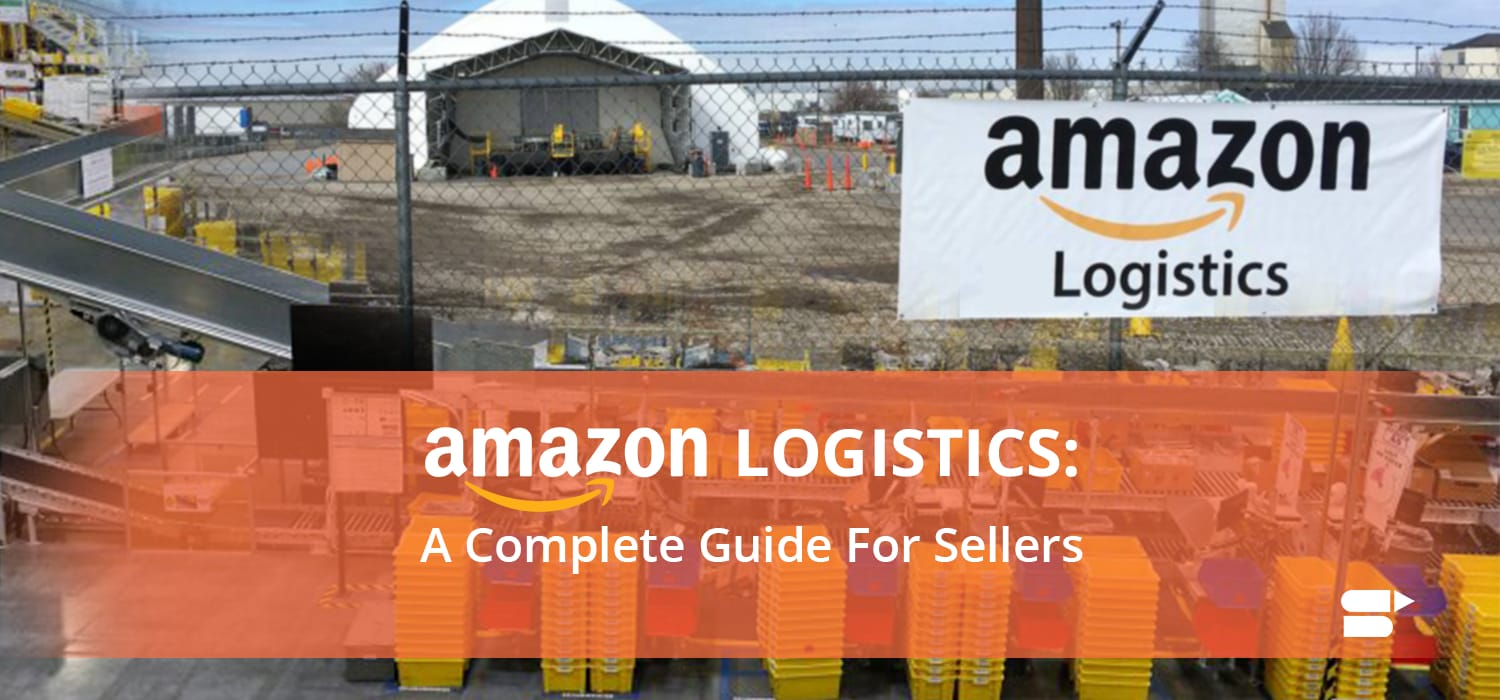
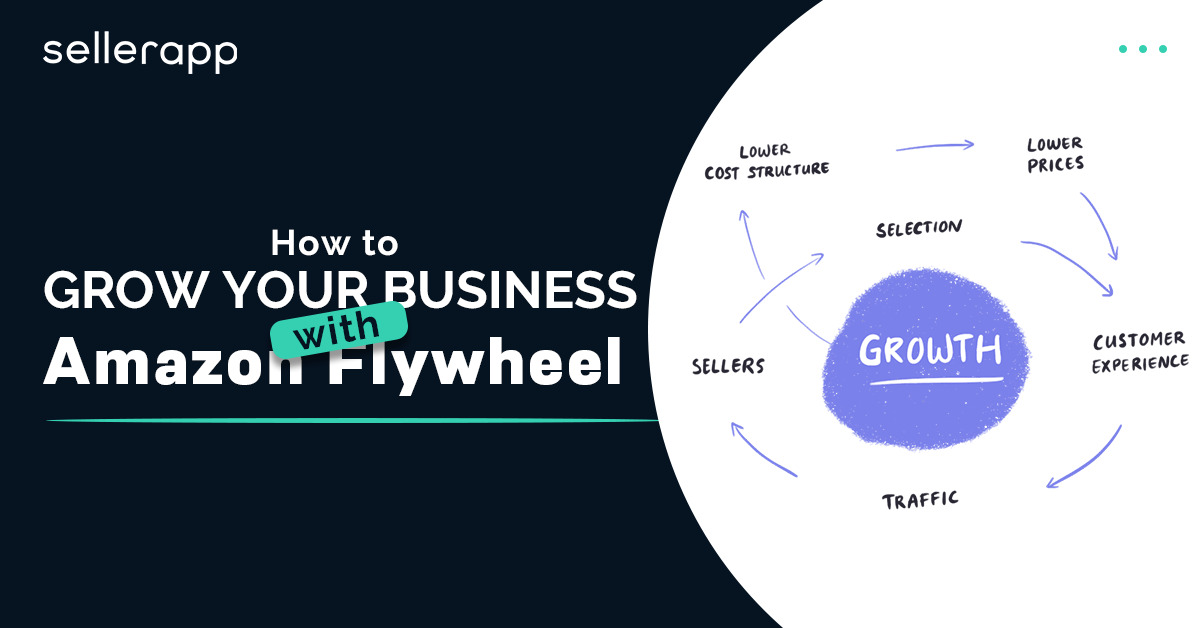

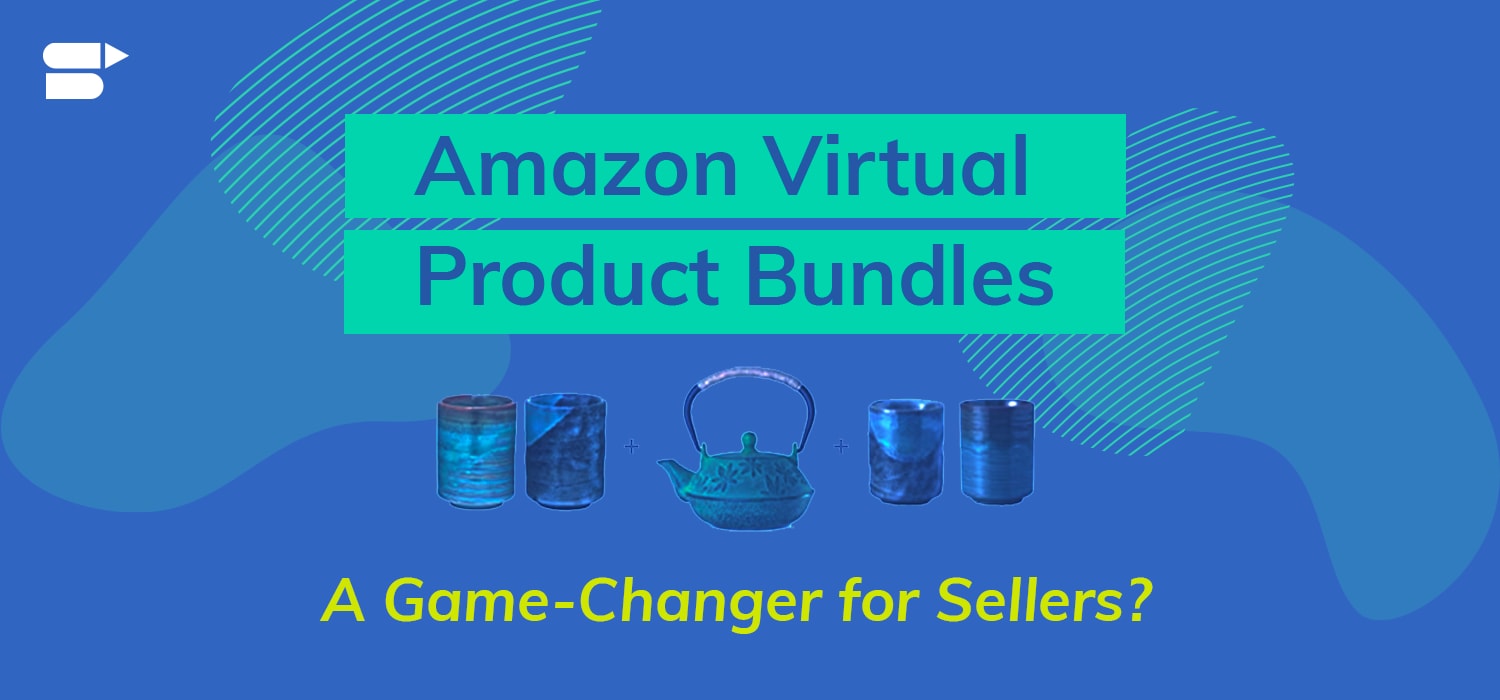
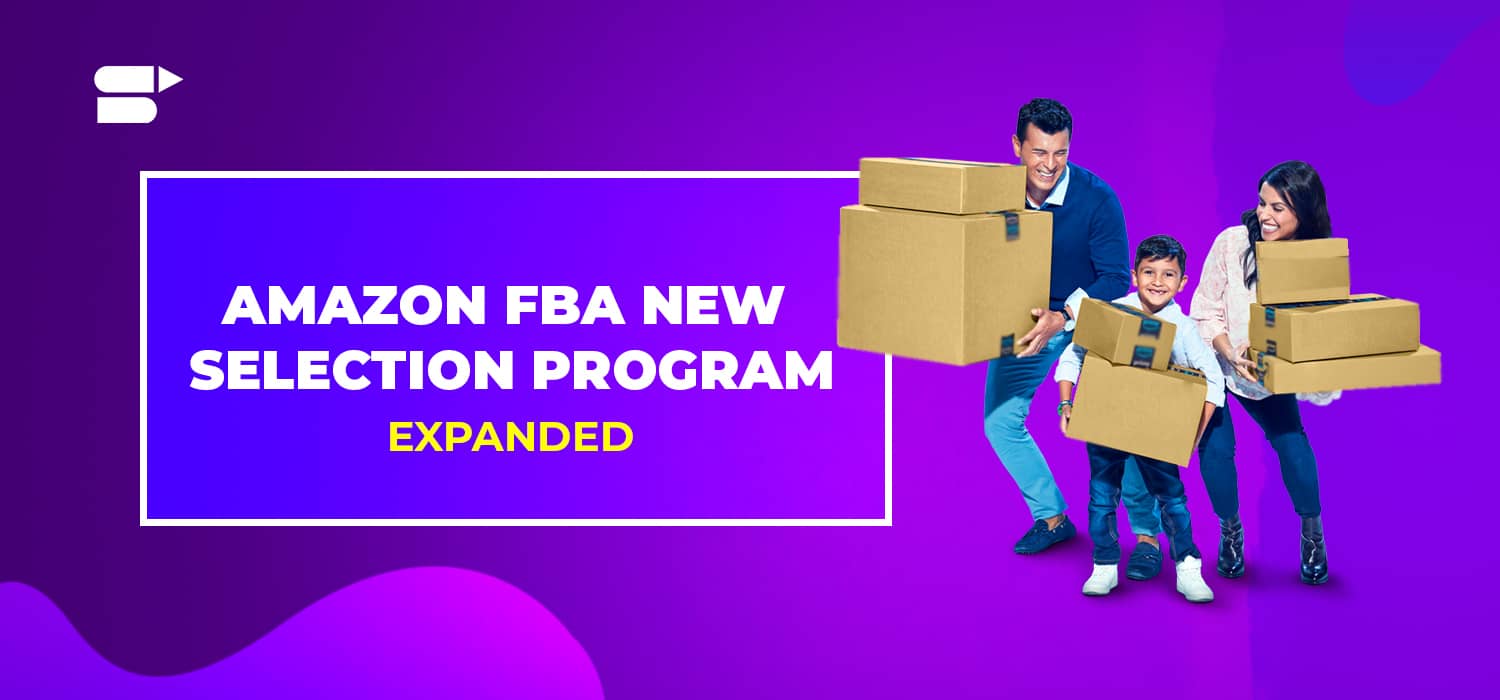


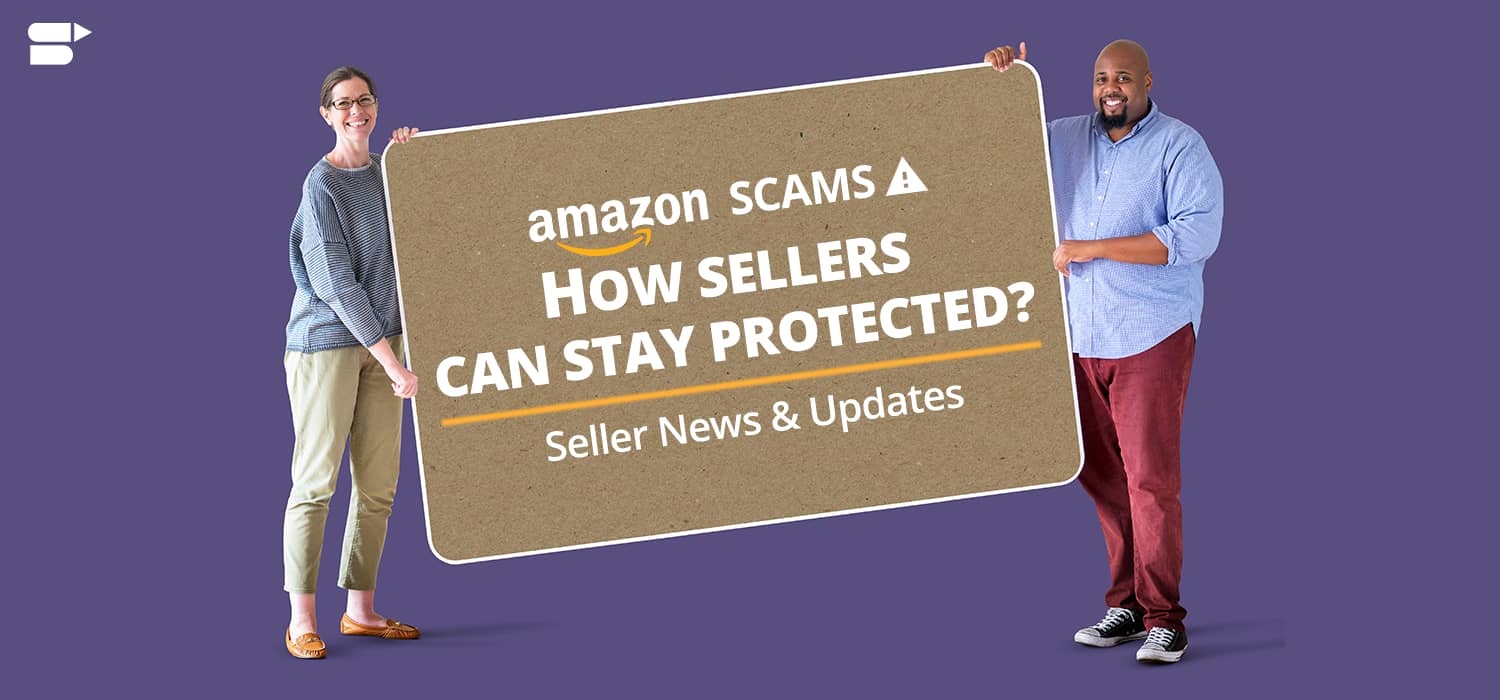
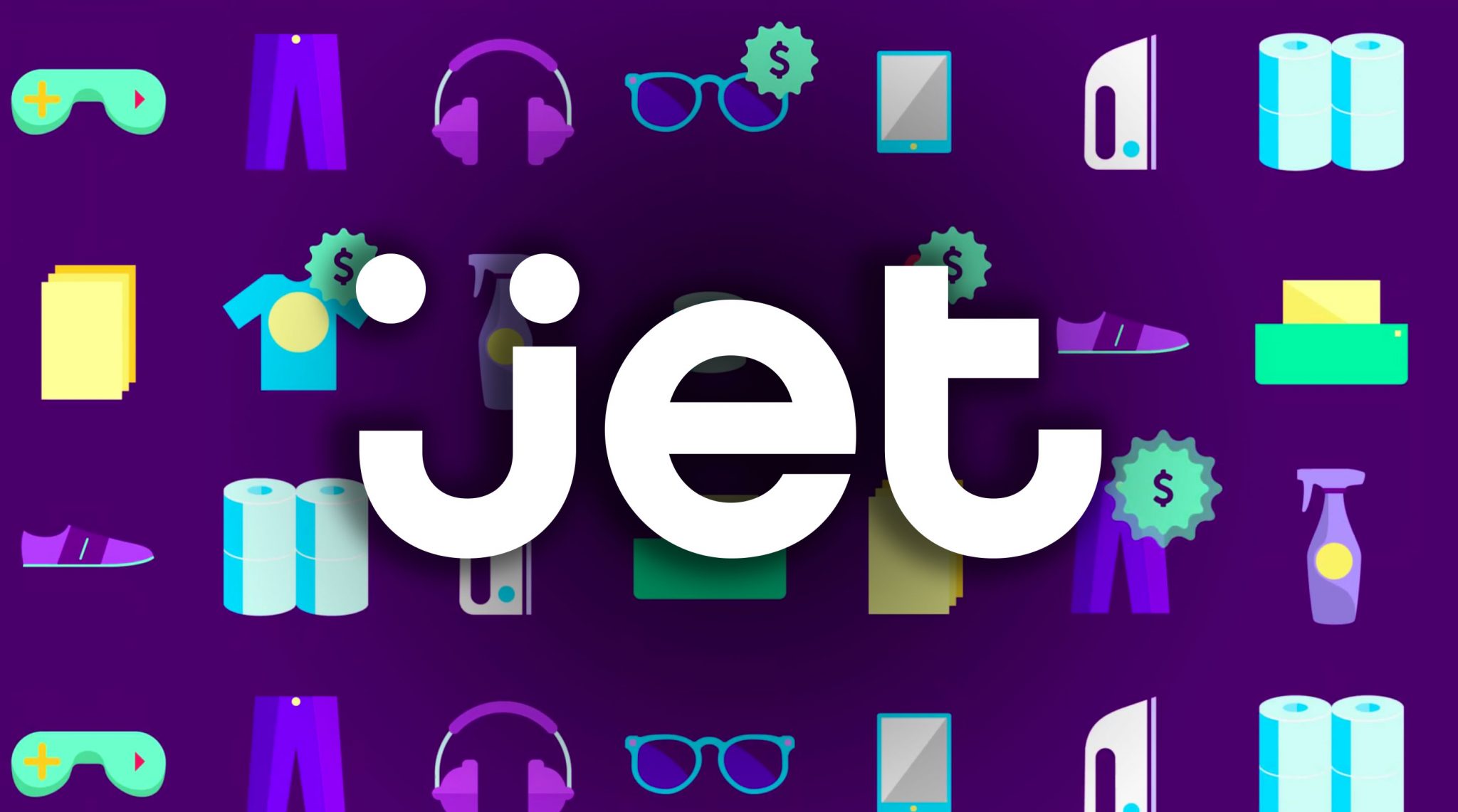
Stella Jacob
November 30, 2024Great post! AI chatbots are definitely revolutionizing e-commerce by improving customer support and driving conversions.
Ellerie Oliver
December 5, 2024This was a really interesting read! AI chatbots are definitely changing the way we handle customer service and making the shopping experience smoother.